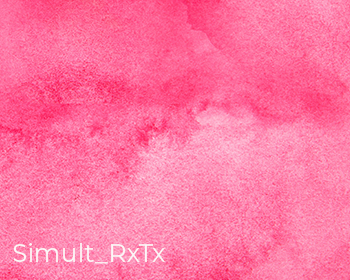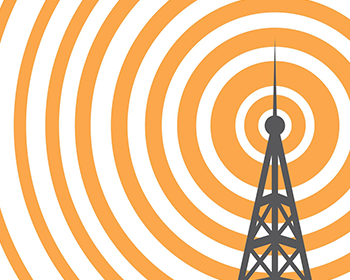Keyword search
The 3GPP summary of Rel-17 Work Items (TR 21.917) contains a whole section on 5G services for the verticals, including ‘Network and application enablement’.
The 3GPP Northbound Interfaces and APIs are specified in 3GPP in order to enable external entities and third-party Application Servers/Functions to access a set of exposed 3GPP network services and capabilities in a secure and controlled manner.
The 3GPP application layer APIs are defined by 3GPP so as to allow the support of various applications/services (e.g. V2X, UAS, etc.) over 3GPP networks and ensure the efficient use and deployment of these applications/services over 3GPP systems via an optimized application layer framework.
The LTE_NR_Simult_RxTx work item specifies the principles for simultaneous Rx/Tx UE capability for FDD-TDD or TDD-TDD band combinations s for which can support or not support simultaneous Rx/Tx for FR1, FR2 and FR1+FR2 and for each FDD-TDD and TDD-TDD band combinations for CA, SUL, MR-DC and simultaneous Rx/Tx capability NR-DC band combinations.
The 3GPP summary of Rel-17 Work Items (TR 21.917) contains a whole section on 5G services for the verticals.
Positioning Enhancements:
3GPP Rel-16 specified various location technologies to support regulatory as well as commercial use cases. TS 22.261 includes the positioning requirements for high accuracy, high availability and low latency. TSG RAN Rel-17 target positioning requirements include horizontal/vertical positioning accuracy, physical layer and higher layer end-to-end positioning latency and GNSS positioning integrity (TR38.857).
5GC Location Services
During Rel-16, Working Group SA2 studied enhancements to 5GC location services and the agreed conclusions have been specified in TS23.273 “5G System Location Services (LCS)”.
Dynamic spectrum sharing (DSS) provides a very useful migration path from LTE to NR by allowing LTE and NR to share the same carrier. DSS was included already in Rel-15 and further enhanced in Rel-16. As the number of NR devices in a network increases it is important that sufficient scheduling capacity for NR UEs on the shared carriers is ensured.
This is addressed by the NR_DSS Work Item (WI), which introduces the support for cross-carrier scheduling from SCell to PCell/PSCell.
|
NR_DSS |
|
|||
|
Core part: NR DSS |
NR_DSS-Core |
R1 |
|
When cross-carrier scheduling from an SCell to sPCell is configured:
-
PDCCH on that SCell can schedule sPCell’s PDSCH and PUSCH,
-
PDCCH on the sPCell can schedule sPCell’s PDSCH and PUSCH but cannot schedule PDSCH and PUSCH on any other cell.
Only one SCell can be configured to be used for cross-carrier scheduling to sPCell.
The maximum number of monitoring candidates and non-overlapping CCEs for PDCCH monitoring (to schedule the sPCell) are split between the sPCell and the SCell used for scheduling the sPCell. The split is indicated via an RRC configured scaling factor.
Note: sPCell refers to ‘Special Cell’. For Dual Connectivity operation the term Special Cell refers to the PCell of the MCG or the PSCell of the SCG, otherwise the term Special Cell refers to the PCell.
References
List of related CRs: select "TSG Status = Approved" in: https://portal.3gpp.org/ChangeRequests.aspx?q=1&workitem=860043,860143
Acronyms
PCell / SCell Primary Cell / Secondary Cell
PDCCH Physical Downlink Control channel
PDSCH Physical Downlink Shared channel
PSCell Primary SCG Cell
PUSCH Physical Uplink Shared channel
SCG Secondary Cell Group
sPCell Special Cell
3GPP Work Plan:
See a listing of all work & study items here: https://www.3gpp.org/ftp/Information/WORK_PLAN/ and search for ‘DSS’ in the acronym field of the Excel sheet there.
Working Groups:
RAN1
3GPP Release:
Rel-19
Rel-18
Rel-17
See also:
Impacted existing specifications:
|
TS |
Description of change |
|
38.211 NR; Physical channels and modulation |
L1 functionality to support the DSS enhancements |
|
38.212 NR; Multiplexing and channel coding |
L1 functionality to support the DSS enhancements |
|
38.213 NR; Physical layer procedures for control |
L1 functionality to support the DSS enhancements |
|
38.214 NR; Physical layer procedures for data |
L1 functionality to support the DSS enhancements |
|
38.331 NR; Radio Resource Control (RRC); Protocol specification |
RRC signalling to support the DSS enhancements |
|
38.300 NR; NR and NG-RAN Overall description; Stage-2 |
Stage 2 spec updates to support the DSS enhancements |
|
38.306 NR; User Equipment (UE) radio access capabilities |
UE capability updates to support the DSS enhancements |
Work on AI is now well established in 3GPP, with studies and specifications expected in Release 18 that will move standards towards providing processes that make full use of the predictive power of data.
Both TSG RAN and TSG SA groups have drawn up specific descriptions of the features needed to embrace both Artificial Intelligence and its class-mate Machine Learning.





